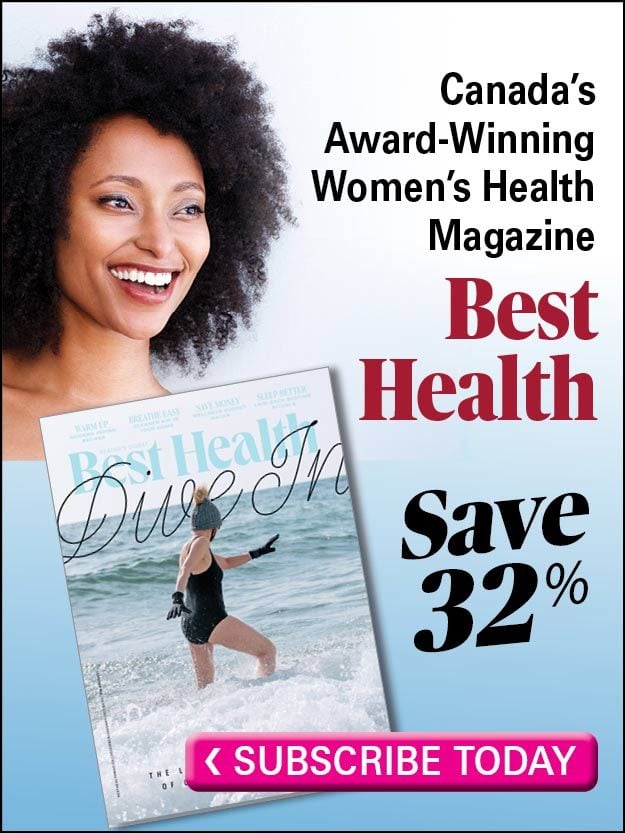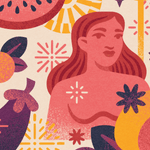I Need You to Know: All Vulvas Are Beautiful
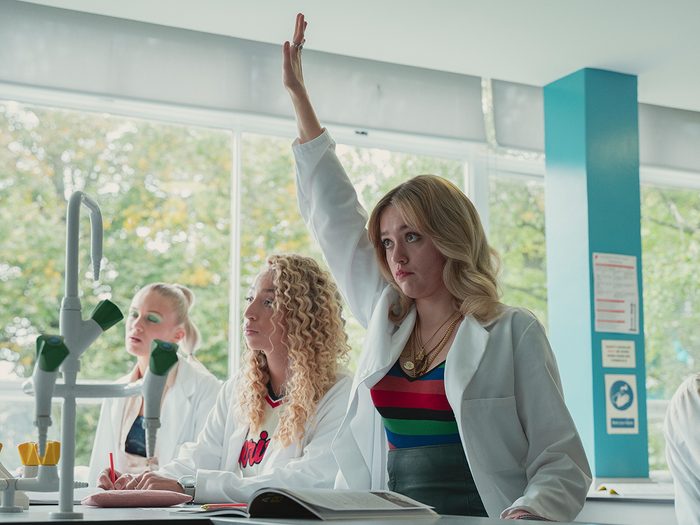
A website featuring beautiful vulva images, by Dutch illustrator Hilde Atalanta, is tackling longstanding stigma and honestly, it’s about time.
Growing up, I thought the vulva was called a “panocha”—a type of Spanish pan bread that has a slit in it and apparently reminds people of female private parts. Hence the slang that developed in many Latin American countries including Mexico, where one of my aunts adopted the term. Panocha was even catchier than the word “parsley,” which is how my twin sister and I, for no apparent reason, also referred to the vulva.
I’m embarrassed to admit that I didn’t start using the word “vulva” until pretty recently, decades after I first heard it in a Grade 7 anatomy class, in which I learned that the vulva is the visible, outside part of the female genitals, whereas the “vagina” is the inside, stretchy tube that connects your vulva to your cervix. For practical purposes, my friends and I thought about the whole “vag” region area as an all-encompassing netherworld of outer lips (labia majora), inner lip bits (labia minora), a clitoris and openings out of which pee, blood and babies were expelled. Truth be told, I wouldn’t have even known what my post-pubescent vulva truly looked like had it not been for an ill-advised decision to wax off all my pubic hair in my 20s and 30s, for fear of being an unkempt mess.
Whenever I caught a glimpse of anyone else’s, for instance while changing in the gym locker room, I questioned what was “ideal.” I had this perception of a hairless, Barbie-like, perfect “porn pussy.” That is to say: small, tight, tucked in and barely even there—but that rarely matched what I saw in real life.
So, when I recently watched the latest Season 3 of Netflix’s smash teen comedy Sex Education and the characters started talking about (and showing!) what vulvas actually look like, I was blown away.
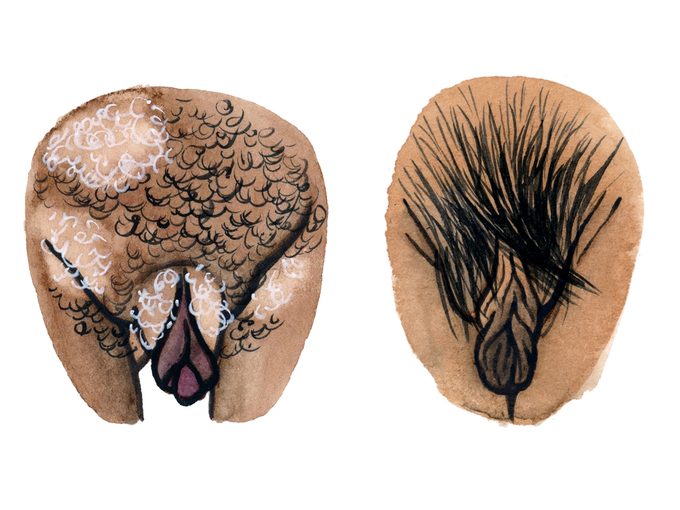
“Um, my vagina doesn’t look like this—one of my lip bits is longer than the other,” says high school student Aimee Gibbs (Aimee Lou Wood), looking at an educational model of a vulva in the office of sex therapist Jean Milburn (Gillian Anderson). Jean proceeds to explain female sexual anatomy, but unlike my Grade 7 anatomy class, she highlights that all of these parts “come in all different shapes, sizes and colours.” She then pointed Aimee, and audiences around the world, to a website that highlights the wide variety of different vulvas.
The aptly named “All Vulvas Are Beautiful” website was created by Netflix and Dutch illustrator Hilde Atalanta, the artist behind The Vulva Gallery and educational book A Celebration of Vulva Diversity. Atalanta’s goal is fighting vulva shame through representation, showcasing illustrations of vulvas and messages from adults of all ages, gender identities and backgrounds. The stunningly detailed images made me confront my own biases about what a vulva “should” look like. It’s the type of resource I wish I had seen growing up.
“What I’m trying to do is create a safer space where people can share their insecurities and share their experiences and struggles and feel that they are not alone, and that they are in fact normal, because I think every human has a need to know they belong,” Atalanta told me in a video interview from their home in Amsterdam. “It’s such an important thing for not only teens, but for adults as well…everyone is scared to death that they are the odd one out and it’s a very powerful feeling to know that there are more people like you.”
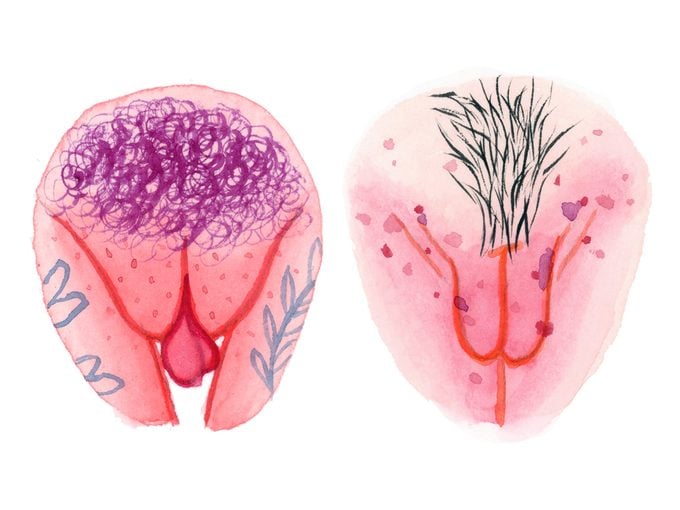
I first came across Atalanta’s work a couple years ago in a Facebook post written by a pelvic floor physiotherapist who was heartbroken by the number of people with vaginas who have literally apologized to her about how their vulvovaginal region looks or smells. Atalanta’s lovingly painted vulva portraits made me feel seen in full-frontal detail. They depict every type of labia, skin and hair pattern imaginable, accompanied by personal stories to remind people that not only does every vulva look different but that these are not just body parts; they exist in relation to each person with a lifetime of experiences that inform how they feel about their vulva.
Vulva stigma is the reason girls as young as nine are requesting labiaplasty surgery to reduce the size of the inner vaginal lips, and that’s terrifying to me on many levels. Besides going under the knife for a cosmetic genital mutilation, how could anyone experience the joys of vulnerability and love and pleasure if they’re ashamed they’re somehow defective?
Dr. Jen Gunter, a Twitter-famous Canadian obstetrician and gynecologist who practices in California, accurately lays most of the blame for this particular type of anxiety on endemic misogyny.
“I know that many other women have had their vaginas explained to them, because for the past 25 years my career has been dedicated to treating vaginal and vulvar problems. I have listened to women with completely normal exams weep that they have been told that they do not smell or taste correctly. That they are too wet, or too loose, or too gross,” Dr. Gunter wrote in a 2018 New York Times essay, a follow up to her 2017 piece called “My Vagina Is Terrific. Your Opinion About It Is Not.”
(Related: Dr. Jen Gunter Sets the Record Straight on Menopause)
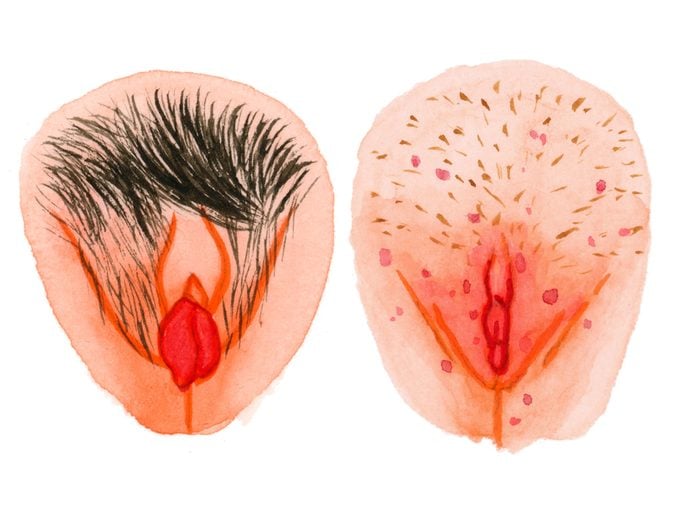
When Aimee explores the All Vulvas Are Beautiful website, she squeamishly takes a look at her vulva in a hand-held mirror. Her discovery: she’s “definitely a geranium”—her flower-inspired match. She later shares the site’s educational message by baking “vulva cupcakes,” flexing her icing piping skills by making ones with longer labias, “frilly” ones, tucked-in ones, menstruating ones. Ones with pubes and ones without. The “crooked” one, she declares, is “just like mine.”
As a mother of two little humans with vulvas, and as someone who is only starting to embrace the different ways my own body has changed over the years, I’m so grateful that today’s teenagers get to grow up with shows and resources like this.
(Related: 5 Myths About Your Lady Parts–Debunked)
The thing is, there isn’t one, singular model for the way a vulva “should” look. Health professionals report that the most common worry they hear about is the size of a person’s labia minora, the inner lips of the vulva. It’s estimated that more than 50 percent of people with vaginas have inner lips that protrude past their outer lips—although this type of vulva is the least represented in mainstream media and porn. In 2018, Swiss researchers studied more than 650 white women, ranging in age from 15 to 84, and concluded what should be an obvious fact: vulvas come in such a huge range of shapes and sizes. There is no “normal.”
“This may seem trite, but there are literally as many unique vulvae as there are humans who have them. Truly. The spectrum of normal, healthy anatomy is vast,” says Rhiannon Webb, a Victoria, B.C. therapist and educator who specializes in sexuality and relationships. She adds that Atalanta has been “a resonant figure in the movement to change people’s relationship with vulva shame, general body positivity and inclusion.”
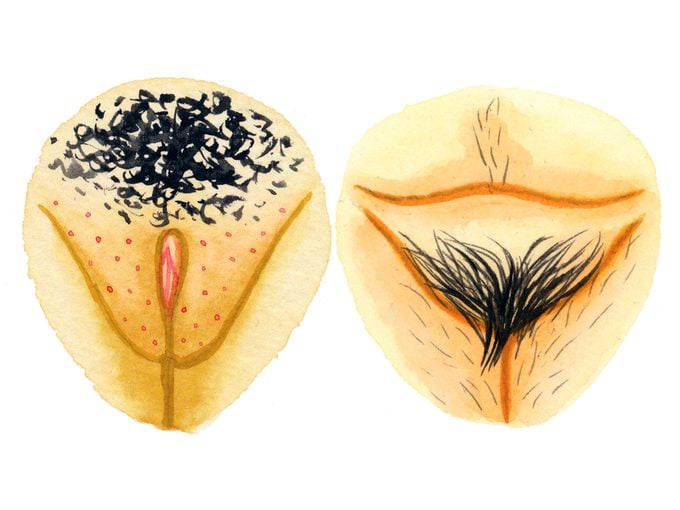
The impact of these portraits and conversations about vulva differences is not limited to cis women, either. Atalanta identifies as non-binary and their work includes transgender, intersex and gender-nonconforming people.
“Dominant culture has a long relationship with simplification and standardization, which isn’t accurate anywhere but can be seen as particularly inaccurate and harmful to the LGBTQ+ community,” says Webb. “In matters of identity, such as for the LGBTQ+ community, connection to our uniqueness allows us to explore and accept who we are individually rather than leaning on normative scripts to try to find ourselves.”
In the same way that photoshopped magazine pictures, social media posts and pornography can skew our perception, a popular TV show or artsy website can also help us feel interesting and ordinary in the best possible way.
The amazing thing about seeing so many different vulvas (thanks to Sex Education and Atalanta’s artwork) is that the concept of weirdness ceases to exist. It makes me sad that for years I didn’t accept, or truly enjoy, my present body as it was, and tried to change it for the sole purpose of pleasing men. I’m embracing my bush—or what’s left of it—and I’m even considering commissioning my own personal portrait from The Vulva Gallery. For me, part of claiming confidence in my vulva and vagina includes acknowledging the power my body has given me, like birthing my two daughters, who already have lots of questions about their “vajoonjoons.” But first, I tell them: They’re called vulvas. And as Sex Education’s Aimee concludes, “Every vulva is unique and beautiful and deserves to be cherished. Cherish it.”
This story is part of Best Health’s I Need You to Know series of candid, first-person essays from women and gender diverse individuals reflecting on a specific lesson they’ve learned about their own health or the health care system. To pitch an essay for this series, please email [email protected].

